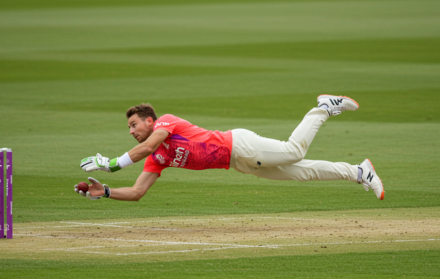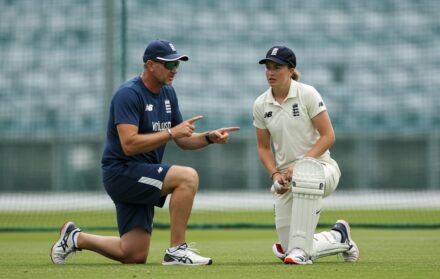
What Are Cricket Fantasy Leagues and How Do They Work?
Cricket has always been more than a sport; it is a passion and a culture across many countries. In recent decades, that passion has found a new digital expression through cricket fantasy leagues. These are online competitions where fans create their own virtual teams, made up of real players, and score points based on those players’ actual performances in live matches. While distinct from traditional cricket betting, the rise of fantasy leagues shows how fans are increasingly engaging with the game in interactive and predictive ways.
The idea has quickly become a global phenomenon. For many, watching a match is no longer enough; being able to predict outcomes, strategise team selections, and test cricketing knowledge against friends or strangers adds an extra layer of excitement. A late six, a crucial catch, or a tight bowling spell can decide not only a match but also a fan’s fantasy league ranking.
In this article, we will explore the full picture: where fantasy cricket began, how team selection and scoring work, the types of contests available, legality across different countries, common strategies, and why it has become such a major part of modern cricket fandom.
History & Evolution of Fantasy Cricket

The first fantasy cricket games can be traced back to the early 2000s, though fantasy sports themselves had already been popular in American leagues such as baseball and American football. One of the earliest global cricket fantasy formats was ESPN’s Super Selector, launched during the early 2000s. It allowed fans to pick players ahead of a tournament or series, with points gained through runs, wickets, and catches.
The concept caught on quickly because it gave fans more involvement. Instead of passively supporting a team, they could make decisions, choose different players, and test their cricketing knowledge against others.
The real boom arrived with the rise of T20 cricket, particularly the Indian Premier League (IPL). With its massive audiences, high-profile players, and short, frequent matches, the IPL created the perfect environment for daily or match-based fantasy contests. Fantasy cricket apps spread rapidly, and what was once a casual competition among friends turned into a billion-dollar industry across Asia, Australia, the UK, and beyond.
The evolution also included new formats. Season-long leagues remained popular, but daily fantasy sports (DFS) introduced contests lasting only for a single match or a few days. This flexibility attracted younger fans who preferred quick results rather than long-term commitment.
Example Fantasy Cricket Scoring Breakdown
| Action | Points Awarded / Deducted | Notes |
|---|---|---|
| Batting | ||
| Run scored | +1 | Bonus for boundaries and sixes |
| Four (boundary) | +1 bonus | Added to the run scored |
| Six | +2 bonus | Added to the run scored |
| Half-century (50 runs) | +8 | Once per innings |
| Century (100 runs) | +16 | Once per innings |
| Duck (0 runs) | -2 | Applies to batsmen and all-rounders |
| Bowling | ||
| Wicket (excluding run-out) | +25 | Additional bonuses apply |
| LBW / Bowled dismissal | +8 bonus | Rewards effective dismissals |
| 3-wicket haul | +8 | Once per match |
| 5-wicket haul | +16 | Once per match |
| Maiden over (limited overs) | +12 | Applies in ODIs/T20s |
| Economy rate (T20/ODI) | +6 to -6 | Based on thresholds set by platform |
| Fielding | ||
| Catch | +8 | Each catch |
| Stumping | +12 | For wicketkeepers |
| Run-out (direct hit) | +12 | Shared if multiple players involved |
| Captaincy Multipliers | ||
| Captain | 2x points | All actions doubled |
| Vice-captain | 1.5x points | All actions multiplied by 1.5 |
How Team Selection Works

At the heart of every fantasy cricket competition lies the challenge of team selection. The basic principle is that each participant must build a team of real players from upcoming matches. These players then earn points based on their actual on-field performance.
The most common format uses a salary cap system. Each participant is given a virtual budget, and every real player is assigned a value based on form, reputation, or expected impact. This means you cannot simply pick all of the biggest stars — strategy and balance are essential.
Teams usually include a fixed structure:
-
Batsmen: often 3–5
-
Bowlers: usually 3–5
-
All-rounders: 1–3
-
Wicketkeeper: 1
Rules may also limit how many overseas players you can include, or how many players can come from a single real-world team.
Another critical part of team selection is choosing a captain and vice-captain. These two roles come with scoring multipliers: the captain typically earns double points, and the vice-captain earns 1.5 times their regular points. A smart captaincy choice can make the difference between winning and losing a contest.
Scoring Systems: How Points Are Earned (and Lost)
Each fantasy cricket platform has its own detailed scoring table, but the principles are generally similar.
Batting points:
-
Runs scored earn points, often 1 point per run.
-
Boundaries and sixes may give bonus points.
-
Strike rate bonuses apply in limited-overs matches.
Bowling points:
-
Wickets are the main currency, with extra points for bowling out top-order players.
-
Maidens, economy rates, and 5-wicket hauls usually earn additional bonuses.
Fielding points:
-
Catches, stumpings, and run-outs all contribute.
Penalty points:
-
A duck might deduct points.
-
Bowlers with very poor economy can lose points in some formats.
The beauty of the system is that it rewards all-round contributions. A bowler who also bats well, or a wicketkeeper who makes several dismissals, can prove more valuable than a single-format specialist. Players must study the exact scoring rules of their chosen platform before making selections.
Types of Fantasy Cricket Leagues & Contests

There is no single way to play fantasy cricket. Fans can choose from a variety of contest formats:
-
Season-long leagues – Participants select a squad for an entire tournament or season. Points accumulate over weeks or months. This rewards patience, long-term planning, and consistent knowledge.
-
Daily or match-based contests (DFS) – Teams are picked for just one match or series of matches. This format is fast-paced, exciting, and especially popular in T20 tournaments like the IPL.
-
Free vs paid contests – Some leagues are free to enter and may offer virtual trophies or bragging rights. Others require entry fees and provide cash or voucher prizes.
-
Public vs private leagues – Public leagues allow fans to compete with strangers globally. Private leagues let groups of friends, colleagues, or clubs compete against each other, often for fun or small stakes.
This flexibility is a major reason fantasy cricket has reached such wide popularity.
Regulation & Legality
One of the most debated aspects of fantasy sports is whether they are games of skill or gambling. This distinction affects their legality across different regions.
In India, for instance, courts have repeatedly ruled that fantasy cricket qualifies as a game of skill because success depends largely on knowledge, research, and decision-making, rather than chance. As a result, it is legal in most Indian states, with some restrictions for minors.
In other countries, the legal picture varies. In the UK and Australia, fantasy sports are generally treated as skill-based competitions. In some regions, however, particularly where gambling laws are strict, certain fantasy formats may be restricted.
Most platforms now include strong responsible gaming practices such as age verification, spending limits, and self-exclusion options to ensure safe play.
Tools, Strategy & Tips for Success

Winning in fantasy cricket is rarely about luck alone. Skilled players apply research, analysis, and tactical risk-taking.
Key strategies include:
-
Studying player statistics: Runs, wickets, form in recent matches, and past performances at specific venues.
-
Reading pitch and weather reports: A turning track might encourage more spinners in your line-up. Overcast conditions might demand seamers.
-
Smart captaincy: Since captains and vice-captains earn multiplied points, these choices should be based on consistency and potential impact.
-
Rotation: Tracking injuries, player fatigue, or changes in batting order ensures your team stays relevant.
-
Balance: Avoid filling your team with only star names. Sometimes underdogs or emerging players offer better value and impact.
Fantasy cricket often rewards those who combine knowledge with calculated risk, rather than simply following reputations.
Common Mistakes New Players Make
Newcomers to fantasy leagues often stumble into the same traps:
-
Ignoring the scoring system: Not knowing that wickets carry more value than runs in some formats can cost dearly.
-
Over-investing in big stars: Loading up on the most expensive players may leave the rest of your squad weak and inconsistent.
-
Failing to adapt: Ignoring conditions, team announcements, or the toss means your selections could quickly become irrelevant.
Avoiding these mistakes is often the first step from being an occasional player to a regular competitor.
Why Fantasy Leagues Matter for Fans & Cricket
Beyond individual enjoyment, fantasy cricket has reshaped the way fans engage with the sport. Watching matches becomes more immersive when every ball can affect your fantasy team’s score. A wicket or boundary is no longer just about the team you support, but about how it shifts your place in the leaderboard.
Fantasy leagues also contribute to the commercial growth of cricket. They attract younger audiences, keep fans engaged across multiple tournaments, and create new communities built around digital sport. Domestic tournaments gain extra visibility as fans research players they might otherwise ignore.
At its best, fantasy cricket builds camaraderie — friends, families, and co-workers all competing in private leagues, sharing the highs and lows of their teams, and deepening their bond through the sport.
Conclusion: The Skill Behind the Game

Fantasy cricket leagues are much more than casual entertainment. They are structured competitions where cricket knowledge, tactical awareness, and smart decision-making can set players apart. From the early days of Super Selector to today’s app-driven, high-stakes contests, fantasy leagues have become an integral part of modern cricket culture.
By understanding how team selection, scoring, and strategies work, fans can move from passive spectators to active participants. Ultimately, the enduring appeal of fantasy cricket lies in its balance: luck may play a small role, but skill and knowledge always win out in the long run.





